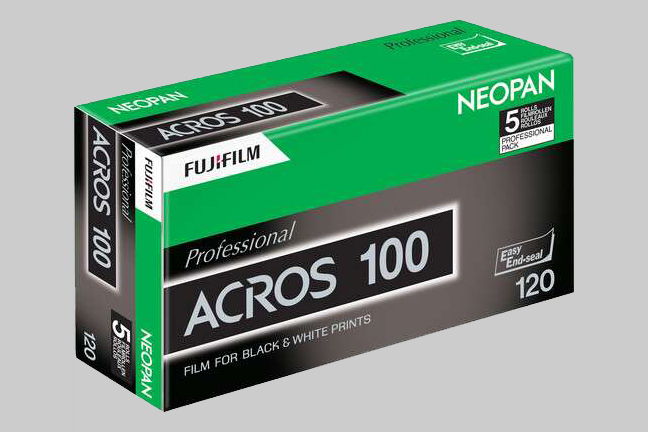
Sure, millennials may be blamed for duck-lipped selfies, but the younger generations are also behind the revival of Fujifilm black and white film. On Monday, June 10, Fujifilm announced a new generation of black and white film, Neopan 100 Across II.
After discontinuing black and white film last year, Fujifilm says the younger generation is helping create a demand to bring the medium back. “As the demand for film rapidly decreased over the past decade and raw materials became difficult to obtain, it caused the company to discontinue marketing black and white film,” Fujifilm said in a statement. “Thanks to consumer feedback, particularly from millennials and GenZs, who have become the new film enthusiasts, the market is changing once again.”
The company says the film type is designed for resolution, fine grain, and sharpness. Available in 35mm and 120mm formats, the film is rated for ISO 100, designed for minimal grain and brighter shooting conditions.
The film isn’t identical to the first-generation film by the same name. The film uses what the company calls Super Fine-Σ technology for enhanced sharpness and minimal grain. Fujifilm also notes that the film type creates “exceptional three-dimensional gradation” even between highlight areas.
While Fujifilm is reviving the film, the Neopan 100 Across II may not be available worldwide. Fujifilm says the film is coming first to Japan in the fall, but will roll out to other markets based on demand.
Digital cameras have largely replaced film but some photographers are returning to the format, often for the atheistic that digital cameras attempt to duplicate with imaging software. Film can also be a helpful tool to improve photography skills — even when using a digital camera — because the lack of an LCD screen requires a better understanding of exposure. Film cameras also have a tendency to encourage photographers to slow down and put more thought into the composition, since each image costs money.
While many major camera manufacturers are exclusively digital, Fujifilm has remained in the film market with its popular line of Instax instant film cameras. “As a leading company in the imaging field, Fujifilm will never stop meeting the challenges of the diverse needs of customers in a wide range of fields, from analog to digital, and continue to provide improved products and services,” the company said in a statement.
Editors' Recommendations
- Instant film savings: Take $70 off on Fujifilm Instax SP-3 on Black Friday
- The Fujifilm X-Pro3’s hidden LCD is an homage to film, but might be frustrating
- Kodak’s Mobile Film Scanner takes film from attic to Instagram




